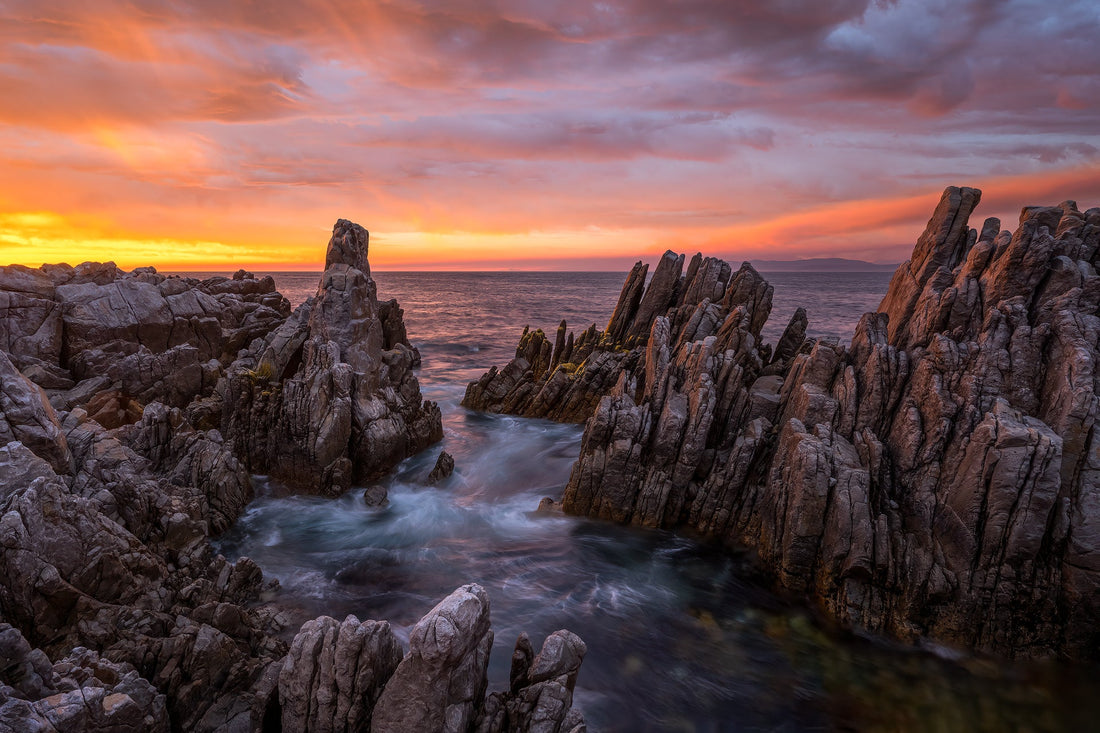
Why Patience Is the Most Underrated Skill in Nature Photography
Kyle GoetschShare
There’s a moment I’ve seen play out more times than I can count.
I’m out in the field, often somewhere remote, rugged, and full of promise — scouting compositions, watching the sky, and hoping nature delivers something magical. A few photographers stands nearby, cameras ready, full of anticipation. But the light isn’t playing along. The clouds thicken. The sun dips behind a stubborn band of grey. Slowly, people start to pack up.
"Looks like it's a bust," someone mutters. And off they go.
And then it happens.
A break in the clouds. The sky ignites. Mist lifts. Beams of sunlight pierce through, setting the landscape ablaze with colour, contrast, and emotion. It's the kind of scene we all hope for. But by now, I’m standing there alone.
I’ve learned that the difference between a good shot and a breathtaking one often comes down to one thing: patience.

Wait for It — The Reward of Stillness
In my work as a nature photographer, especially when capturing landscapes or chasing the Milky Way, I’ve come to rely on the art of waiting. Some of my best images have happened after the "bad" weather seemed to ruin everything. Storm clouds roll in, and people instinctively head for shelter. But often, that turbulent atmosphere is exactly what gives a scene mood, energy, and depth.
But here's the honest truth: most times, nothing happens.
The clouds never break. The light never comes. The mist stays thick and the dramatic scene you envisioned just doesn’t materialize.
In fact, nine out of ten times, it’s a bust.
You wait, and you leave with nothing more than cold fingers, a damp jacket, and maybe a little frustration.
And yet, it’s worth it.
Because that one time it all comes together — when the sky opens, the light breaks through, and your patience is rewarded — it makes every single failed attempt fade into the background. That one image, that one moment, carries a kind of emotional weight and satisfaction that simply can’t be replicated through shortcuts.

Find Your Composition, Then Commit
Another common mistake I see is photographers bouncing from location to location, chasing fleeting conditions, hoping something will click. It’s often better to slow down.
Find a strong composition and commit to it.
Set up. Dial in your settings. Visualize what could happen. And then wait. Let the landscape speak. Give it time to evolve.
Patience creates space — not just for the light to change, but for you to become fully immersed in the scene. You start to notice things: textures, shifts in colour, subtle movement. This depth of observation often leads to better images, regardless of the weather.

Photography as a Practice in Presence
For me, photography is as much about being present as it is about producing. It’s about connecting with a place, not just passing through with a camera.
Patience isn’t passive. It’s an act of trust. Trust that you’ve chosen your composition well. Trust that the light might reward you. And trust that even if it doesn’t, the act of waiting still matters.
Because when it does happen, that one time in ten, it’s unforgettable.

Final Thoughts
Nature photography teaches you to let go of control and embrace uncertainty. You can't force magic to happen. But you can be there when it does.
So slow down. Wait a little longer than everyone else. Stay when it seems pointless. Because eventually, the landscape gives back — and when it does, it gives generously.
Patience isn’t just a skill. It’s your greatest creative advantage.
